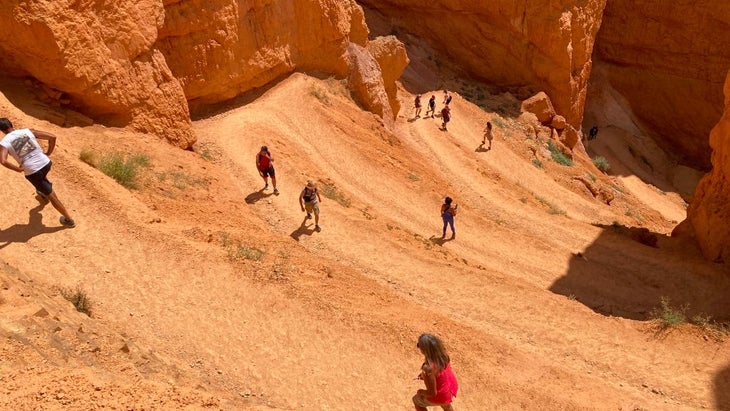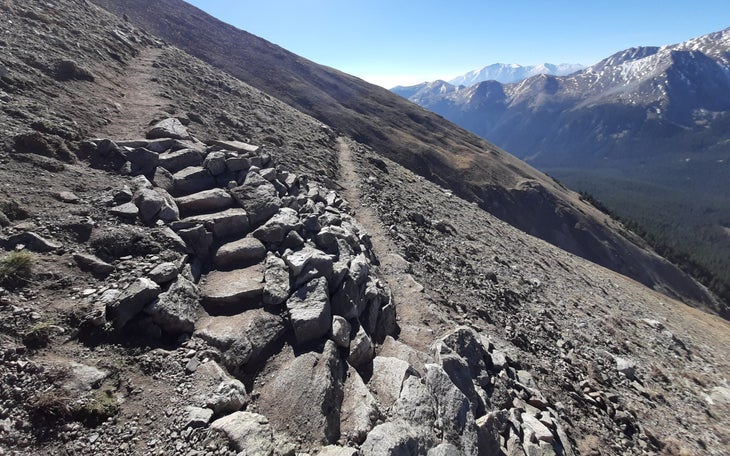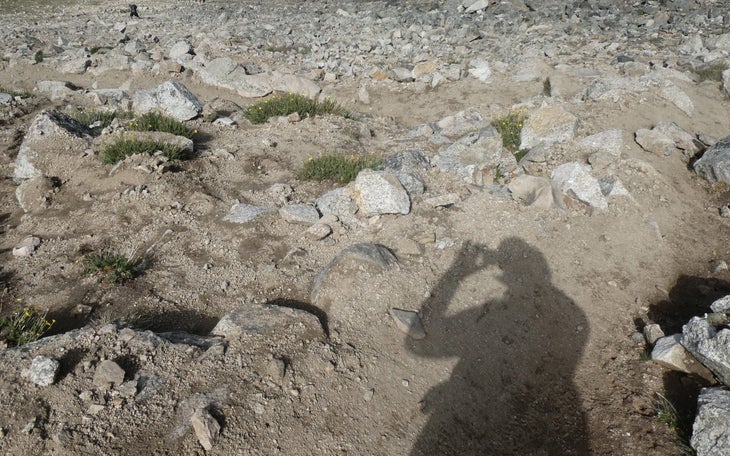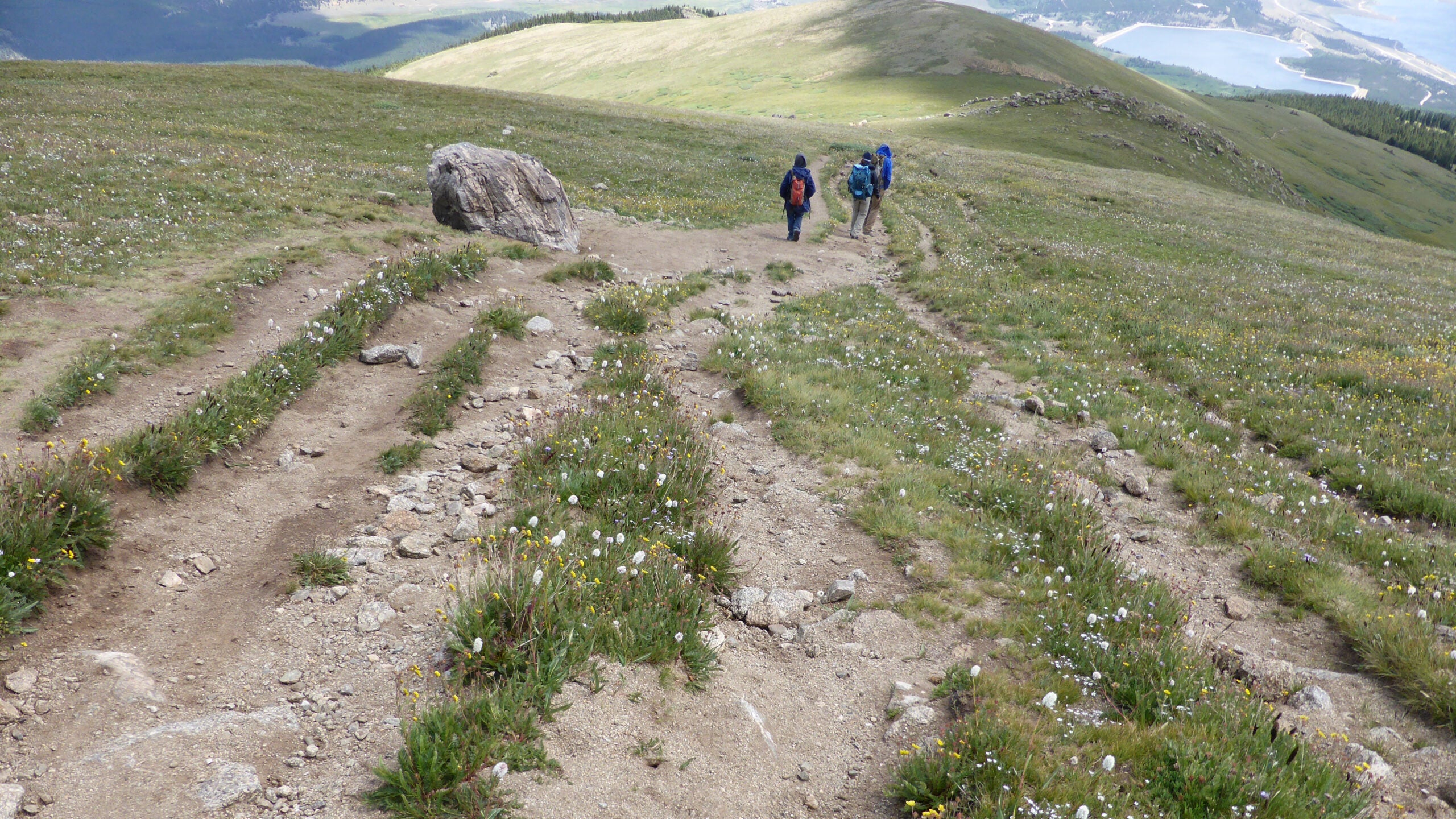In early August, on the shoulder of Colorado’s highest peak, 14,439-foot Mount Elbert, I suddenly found myself unable to do anything except apologize.
I had started up the mountain so early that morning you could still call it night, hiking the remote Black Cloud Trail that leads to Elbert’s southeast ridge. The trail was lit by so many stars I sometimes forewent my headlamp.
Delirious from a lack of sleep and the increasing altitude, I was barreling back down the mountain not long after dawn, visions of breakfast skillets back in Leadville dancing in my head. But my post-summit reverie was broken by a nightmare scenario: a trail-crew looking up from their work to judge me. They were silent, but their scowls might as well have been screams.
At a junction a few hundred vertical feet up from them, I’d instinctively taken what appeared to be the most direct route down, plunging across the slope. I thought the route seemed especially steep, not like the kind of steadily graded trail the Colorado Fourteeners Initiative typically builds and maintains. I hadn’t seen any obstacles blocking access to this part of the trail.
Alas, this wasn’t the trail at all, and I had inadvertently cut several switchbacks, realizing it only when I ran into the very crew that was managing them.
“I’m so, so sorry,” I repeatedly stammered to the Sunday morning gang, explaining that I was a strict switchback-cutting-is-for losers apostle and that I’d simply missed a turn.
“And it doesn’t look like I’m the only one who made that mistake,” I continued, pointing to the sizable rut I had followed. They sighed, less at me than their Sisyphean task: trying to maintain a mountainside in a world where most people simply want to get somewhere else as quickly as possible.
“It’s cheating,” Lloyd Athearn, the executive director of the Colorado Fourteeners Initiative, told me with a laugh two weeks later, the “it” in question being cutting switchbacks while coming down a mountain. “We just got done with the Olympics, and someone can’t just cut the turn on the track and still be in the race,” he added. “They’re disqualified. You’re not doing the trail any faster—because you’re not doing the trail.”

Indeed, switchbacks—and, namely, cutting them in an effort to save time—had a big year. A month after my conversation with Athearn, on Labor Day, Idaho pro runner Michelino Sunseri appeared to set a new for getting up and down one of the country’s most totemic peaks, Grand Teton. Trouble was, he cut a switchback to avoid what he called the “Congo line of hikers” who weren’t paid athletes, since his record was apparently more important than their joy or the trail itself. His FKT was revoked, and the National Park Service issued a hefty citation, prompted in part by his very public flouting of the rules on—where else?—Strava.
The outcry against Sunseri was swift and sustained; many in hiking and running communities rightfully resented someone who seemed to see himself as better or more important than the hoi polloi, “the Congo line.”

But Grand Teton National Park—like most every mountainous public land I’ve ever encountered in the United States—is often an endless spiderweb of unofficial trails created by cutting switchbacks, sometimes unintentionally built by individuals looking to save a little time. Collectively, though, these decisions lead to massive environmental degradation. It’s easy to scorn Sunseri, but we’ve all done it. I make every effort to never cut switchbacks, but, just as I did on Elbert, I still make mistakes. Making less in the future is a nearly effortless way to preserve the trails we all share.
“When trails switch back up a slope, it does two different things: It lessens the grade of the trail, as opposed to just going straight up that slope,” explains Athearn. “And then it allows water to flow down the backslope, across the tread, and then the bottom part of the slope. That’s much less impactful to the trail’s tread.”
That first reason is why people cut switchbacks at all. They see where the trail is eventually going and they trust they’re strong enough hikers or runners to get to the same place in a more direct albeit steep way. They shave off a few hundred feet and maybe a minute or so of movement; done enough times during a long day or even an FKT attempt, that adds up to getting to that breakfast skillet much faster. I understand the temptation entirely, and I’ve certainly done it in the past.

But switchbacks aren’t just for us; they’re for the benefit of the landscapes we’re there to see and the trails we use to visit them. Water wants to get from a high point to a lower one as quickly and efficiently as possible, so when we help foster a steep rut by cutting a switchback, we give water a chance to rush downhill—and bring precious soil with it. Athearn tells me that in high alpine environments, he expects only a foot of soil to linger above the rock, and it often takes a millennium to build just an inch of that soil. Cutting across a switchback can wipe it out immediately. “You’re looking at 10,000 years of evolutionary process just flowing down a hillside,” Athearn says.
And then, of course, there is the human effort that goes into building and maintaining these trails. It is easy to look at a trail and not understand the effort they require, but these things are built and maintained by people who, more often than not, love a place as much as you do. When Athearn describes the process of constructing a trail, my brain breaks a little—the scouting and inspecting and permitting and staging and building and maintaining. The folks on their hands and knees, moving rocks and smoothing dirt on that Sunday morning, were part of a multi-year effort to help that particular route endure increased traffic and erosion. Cutting a switchback is, then, a wordless “screw you.”
Athearn and his crews have heard hikers talk of trail gnomes who emerge in the middle of the night or pure divine intervention as explanations for trails and their maintenance. He can only laugh. “No, it’s just a bunch of us smelly workers out here for weeks at the time,” he says. “God didn’t place rocks there in a miraculous fashion. Mere mortals did.”
For me, this conjures the war against litter, which, as a species, we are still losing. If you’ve got trash in your car, the most expedient thing to do is toss it out, to make it someone else’s problem, to make it the environment’s issue. Why wait for a trash can when all the world’s available to be one? And why wait for a switchback when you can just head straight up hill? The same answer holds for both questions: because there’s more to the world than our immediate needs, and hoping to finish a trail a few minutes faster is not much of a need at all.
Grayson Haver Currin has written about long-distance hiking for �����ԹϺ��� since 2020. He completed the Triple Crown in 2023 and has logged more than 11,000 miles on the United States’ National Scenic Trails. He writes about music for The New York Times, GQ, Mojo, Pitchfork, and many more. He lives high in Colorado’s Front Range.


